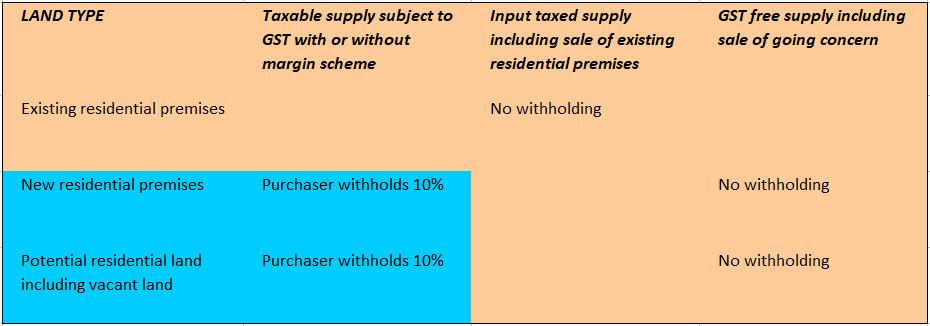A common mistake, misstep or omission on setting up a family discretionary trust (FDT) or other kinds of trusts is to use the Australian Business Number (ABN) of the trustee of the trust, typically a proprietary company, rather than to obtain and use a separate ABN after the trust has been established to run a business or enterprise.
Situations where this can happen include:
- an ABN application form is completed incorrectly for the company without correctly identifying the FDT as the entity to which the application applies;
- early application for the ABN is made by the company for an ABN, say so the company can say, open a bank account before the trust formation; or
- the company is already doing other things and has an ABN already.
In each of these situations a client of an accountant can be tempted to use the ABN already to hand for the FDT. A client so tempted may well think – my accountant can sort this out later!
ABN for the wrong entity
It’s a clear mistake as a trust is clearly a separate entity to the company. An entity that can obtain an ABN under the A New Tax System (Australian Business Number) Act 1999 is equivalent to an entity as defined under the companion GST legislation which is:
(1) Entity means any of the following:
(a) an individual;
(b) a body corporate;
(c) a corporation sole;
(d) a body politic;
(e) a partnership;
(f) any other unincorporated association or body of persons;
(g) a trust;
(h) a superannuation fund.
Note: The term entity is used in a number of different but related senses. It covers all kinds of legal persons. It also covers groups of legal persons, and other things, that in practice are treated as having a separate identity in the same way as a legal person does.
sub-section 184-1(1) of the A New Tax System (Goods And Services Tax) Act 1999
which also conforms with other definitions of entity in the Income Tax Assessment Acts (ITAAs). Its clear that a company can have an ABN and a trust with a company as its trustee can and should separately obtain another ABN where the trust is to carry on an enterprise requiring an ABN.
The usual trust implementation
The usual implementation of an asset protected FDT is to set up the FDT with a corporate trustee with limited liability where the company is to be a dormant company. That is the company will have modest nominal share capital so it can register as a proprietary company with the Australian Securities and Investments Commission (ASIC) but the company will not have business or other substantive assets or liabilities on its own behalf as all intended activity of the FDT will be as the trustee of the FDT.
The company must have a right to be indemnified out of the property of the FDT so that the directors will not be personally liable for the debts of the trust under section 197 of the Corporations Act 2001 but, in terms of the balance sheet of the corporate trustee of a FDT, that right and the share capital are about the only few assets the company needs in the role of trustee of a FDT.
Impact of the wrong ABN
But if an ABN for the company is quoted on bank accounts and on invoices then the Australian Taxation Office (ATO) and all others concerned with the business are informed that transactions thought to be made by the FDT for its business are made by the company in its own right. The accountant for the FDT will have little choice but to record the transactions as transactions of the company in its own right and prepare the accounts of the company accordingly. Significant penalties can apply if the company persists with a position that it was quoting the ABN of the company for activity of an entity without an ABN rather than for activity in its own right.
So instead of the accounts of the company being dormant and those of the FDT being active, the business transactions will go to the accounts of the company and nothing will happen on FDT accounts and the implementation of the trust to operate the business will misfire.
If the business is being run under a business name, where the ABN of the company was used to apply for and obtain the business name, then the ATO and all others concerned with the business will view and treat the business name as a business name of the company and not the FDT.
Fixing the problem – reverting to the trust structure
This is one of those problems that can’t be fixed retrospectively without penalty trouble – the ABN has been quoted and relied on, but the problem can be fixed going forward.
Get the right ABN
The FDT can belatedly apply for an ABN. It is possible for an ABN to have retrospective application viz. the ABN can take effect from a date nominated by the applicant some time prior to the time of the application. But the ABN taking earlier effect won’t cure the problem of where the wrong ABN has been quoted since then.
Restore the company balance sheet
The company shouldn’t need to be voluntarily liquidated but a comparable internal process can be done to transfer the assets and liabilities in the accounts of the company to the FDT and to restore the balance sheet of the company to the modest assets described under The usual trust implementation above from a set fix or changeover date. If the problem is picked up early enough – it should be! –significant income tax profit and capital gains tax exposures of transferring assets to the FDT that may require remedy such as the small business restructure rollover in Division 328-G of the ITAA 1997 may not necessarily be needed to reset the company balance sheet.
Coping with the administrative consequences of changeover
If a client of an accountant has put itself into this sort of tangle it is likely that the client will struggle with this remedial action too which presents some administrative challenges as the client is now dealing with, effectively, two discrete businesses before and after the changeover day: The business initially carried on by the company with its ABN and then the business carried on by the FDT with its ABN from the changeover day.
It is important that the accounting and administrative team of the client (the Team) can pinpoint company period transactions before the changeover date and FDT period transactions that happen after the changeover day.
So a further element of the fix proposed here is to change the name of the company and for the Team to be meticulous about changing processes and stationery etc. to the new company name once the changeover day happens and the FDT period is underway.
There is an ASIC cost to change the name of the company and stationery etc., and time of the Team to manage all of this, but that cost should be considered in the context of alternatives that are costlier such as to voluntarily liquidate the company, to start afresh with an entirely new business structure to get the ABN process right or to abandon plans to use the FDT structure altogether.
A common technique for a name change for a company running a business, when a name change isn’t really wanted for public facing reasons; is to change NameOfCompany Pty. Ltd. to say NameOfCompany (Aust.) Pty. Ltd. This can help the Team and its customers to apply the right ABN and to get the accounting right (e.g. sales put through the right books of the two distinct entities NameOfCompany Pty. Ltd. to NameOfCompany (Aust.) Pty. Ltd (as trustee for the FDT) in this example for before and after changeover day transactions.
Unless something like this is done the Team and customers of the business might get very confused and might not manage the transition to the FDT as sought all along.
Impact of name change on the appointed FDT trustee
Unlike a liquidation of the company, after which a new trustee of the trust would need to be set up and appointed, a name change won’t affect the position of the company as the trustee of the trust.





